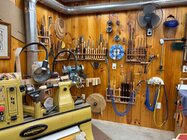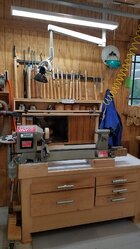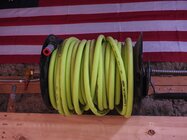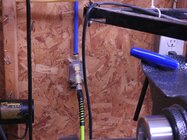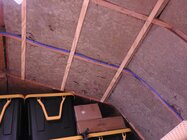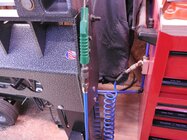As I wait for my new lathe to arrive, I’m working on installing air plumbing in my shop (another big “finally” kind of thing)… I’m trying to figure out the best placement for a quick-connect mount at the lathe. At first I’d thought to put it on the wall behind the lathe, but I’ve lately been thinking I might put the quick-connect on the ceiling at the tailstock end of the lathe, about plumb with the plane between turner and lathe bed, if that makes sense. I expect I’ll use a magnetic hook on the lathe to corral an air gun.
Wall space is a bit precious as it’s occupied by turning-related storage – a mount would probably be low on the wall, and so less accessible to swapping out. On the other hand, the lathe definitely feels like a spot for a permanent air gun connection, making swapping less of a concern.
Ceiling space is plentiful and easy to reach for swapping connections(**), but risks putting the hose more in the way. On the plus side, a hookup near the tailstock end would serve dual-purpose for both lathe and my workbench.
With all of that (hot ) air out of the way, how are those of you with compressed air at the lathe set up?
) air out of the way, how are those of you with compressed air at the lathe set up?
(**) I have low shop ceilings. The high side is only 94”, and the lathe is on the low side where I can easily touch the ceiling.
Wall space is a bit precious as it’s occupied by turning-related storage – a mount would probably be low on the wall, and so less accessible to swapping out. On the other hand, the lathe definitely feels like a spot for a permanent air gun connection, making swapping less of a concern.
Ceiling space is plentiful and easy to reach for swapping connections(**), but risks putting the hose more in the way. On the plus side, a hookup near the tailstock end would serve dual-purpose for both lathe and my workbench.
With all of that (hot
(**) I have low shop ceilings. The high side is only 94”, and the lathe is on the low side where I can easily touch the ceiling.

